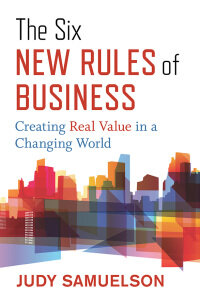With the regularity of a Number 23 bus, this week we witnessed another very messy, very public and very angst-ridden corporate leadership crisis with the sacking of McKinsey CEO Kevin Sneader.
This on the heels of a $574 million fine levied by the US Government on the management consultancy firm for the advice they gave to Purdue Pharma. Advice that was shown to have played a significant role in how, where and to whom Purdue built their very lucrative Oxycotin business thus accelerating the deadly opiod crisis in the US.
Not a good look for the blue suits and blue flame thinkers at one of the world’s most prestigious and renowned consultancies.
Not a good look when you consider the Purdue Pharma debacle is only one of a slew of morally-questionable but highly-lucrative engagements that McKinsey has been tied to in the past decade.
Most consultancies crow about their case studies but McKinsey’s include helping corrupt politicians in South Africa and Saudi Arabia, helping US Immigration run more “cost effective” detention centres for illegal immigrants, recommendations that almost bankrupted SwissAir and playing a sizable role in the Mac Daddy of all corporate debacles Enron. Not a good look at all.
Sadly, McKinsey are hardly alone for business practises that don’t, in the cold light of day, stand up to the slightest scrutiny.
Boeing’s 737 Max scandal showed a pervasive culture of in-fighting and deliberately covering-up critical information from regulators in an attempt to get the new design out to customers.
Wells Fargo aggressive sales orientation, embedded behaviour of “cross selling” and secretly opening thousands of accounts on behalf of unwitting customers lead to a $185 million fine by the Consumer Financial Protection Bureau.
VW’s “Emissionsgate” showed an organization so desperate to secure EPA approval that they intentionally built software to create false emissions reports and deployed that software in 11 million cars worldwide.
And these are only scandals directly tied to business practises.
They don’t include the litany of scandals related to toxic leadership and environments of bullying and harassment – Uber, WeWork and, recently in Canada, events in our Governor General’s office.
It doesn’t take management consultancy pivot tables and regression analysis to highlight a few common themes across these various examples.
A “Win at all costs” mentality
Public company pressure to deliver consistent quarterly results
Male leadership
Granted that’s a sweeping generalization and ignores hundreds of companies that haven’t ended up on the front page of the Wall Street Journal or in a Senate hearing, but those are undeniable and consistent themes.
Thankfully there’s a growing counterforce that is taking these situations head-on and refusing to back down regardless of management pressure.
In 2018 Google employee’s staged massive walkouts and “silent” protests when it was revealed that the organization had paid $90 million to a former senior executive who had been ousted for a series of sexual harassment claims.
More recently Google’s employees have taken the tech giant to task on issues as wide ranging as ethical AI and selling surveillance software to Saudi Arabia and China. Microsoft and GitHub employees famously rallied forces inside both organizations to protest a move to fulfill US government contracts to departments like ICE who, at the time, were running detention centres where children and parents of illegal immigrant families were being forcibly separated.
Interesting sidebar but two of the most celebrated examples of this counterforce began with memos written by well-respected female leaders. Susan Fowler’s famous blog post at UBER and Timnit Gebru’s “withering” internal email at Google.
So why does this matter?
Well, besides the impact to reputations, share prices, pension plans and the growth trajectory of organizations that employ thousands of our fellow humans, it matters significantly.
I’ve long maintained a perspective that your culture exists to accelerate, or impede, the successful execution of your corporate strategy.
And, as AG Lafley and Roger Martin so eloquently synthesizes it, strategy is merely the answer to two basic questions:
Where are you going to play?
How are you going to win?
As such, perhaps the larger question for management (and management consultancies) to ponder is this?
Is it more important that your Culture has a conscience or that you have a conscientious Strategy?
That your business strategy reflects growing concerns about the environmental and societal impact of a “win at all costs” ethos.
That your business strategy cleaves toward emerging practises like triple-bottom line measurement and an ethos of “Mutuality” as espoused and practised by the behemoth MARS Corporation and rejects the dated scarcity of capital mindset that underpins Milton Friedman’s assertion that business is entirely about maximizing shareholder value.
That your business strategy is informed by leading thinkers like Gary Hamel in “Humanocracy” and Judy Samuelson in “The Six New Rules of Business”, who reframe corporate “purpose” not as some whitewashing exercise to make consumers believe your dolphin-friendly tuna and lead-free paint products are actually leading to a kinder, gentler world. But, to poorly paraphrase them, to see “purpose” as a binding contract and bond of goodwill between corporations and the societies and natural systems upon which the long-term success of those corporations ultimately depends**
After all, how many consumers will you dupe, government regulators will you skirt, and endangered environments will you clear-cut before your winning means everyone else loses?
My ask, Dear Reader, is before we ponder the morality and debatable behaviours and actions of any Culture, perhaps we should ask about the Strategy of that organization first.
If Culture really does reflect, accelerate or impede any Strategy, how conscientious is that Strategy to begin with?
I welcome your feedback and opinion.
** - Page 22. “The Six New Rules of Business. Creating Real Value in a Changing World.” Judy Samuelson


